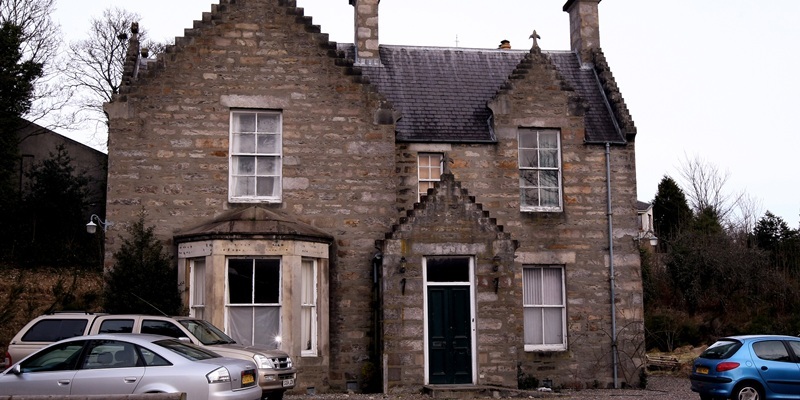The fight to retain a well-known building at the centre of a planning storm in Pitlochry has received the backing of Historic Scotland.
Residents have been battling to save Bank House, which has been earmarked for demolition alongside the former Gregg’s Bakery.
Now experts from the conservation watchdog have weighed in against plans to transform the Atholl Road site into a hotel, retail and residential development.
They claim that Upland Developments proposals will result in the loss of an important green space in the heart of the Victorian town and that the removal of historic buildings in a conservation area has not been “adequately justified.”
In a letter to Perth and Kinross Council’s planning department, inspector of historic buildings Michael Scott wrote, “The Pitlochry Conservation Area Appraisal identifies the former Bank House at 82 Atholl Road as a building of merit and throughout the appraisal the contribution of Bank House and its setting is mentioned.
“Bank House and its attractive landscape setting is an important, contrasting focus in the urban character of the main street and provides an attractive front to a key civic space.
“We believe that Bank House and its grounds makes a very positive contribution to the conservation area, even with some later extensions to the rear and the site should not be considered a suitable redevelopment opportunity.”
Built between 1852 to 1854, the property was designed for the Commercial Bank of Scotland by Edinburgh architect David Rhind. Described as a “baronial style, domestic scaled villa”, Bank House was latterly transformed into a backpackers hostel, although it has been empty for some time.
Despite this, locals have continued to look upon it as an important part of the landscape of Pitlochry town centre and hoped to convince the Aviemore-based developers to incorporate it into revised plans.
However, Upland Developments has stood its ground and its latest design statement said, “Any proposal to retain/incorporate Bank House would inevitably compromise the design to a degree completely disproportionate to any merit it may have as a building.”
According to Historic Scotland, the firm has failed to follow the guidelines set out by Scottish Historic Environment Policy (SHEP).
These require applicants to prove that they have made “all reasonable efforts” to retain a building by fully understanding its significance and setting, ensuring that repair is not economically viable and having its condition assessed by appropriate conservation professionals.
Mr Scott added, “We believe, therefore, in light of the above, the proposal fails to meet any of the above criteria as no evidence or overriding justification has been put forward to support the design statement assertions. Therefore the application should be refused.
“The impact of the wider redevelopment proposals should also be considered in light of the potential adverse impact on the setting of the adjacent category A-listed Pitlochry Parish Church and its hall and key views to and from this landmark.”
